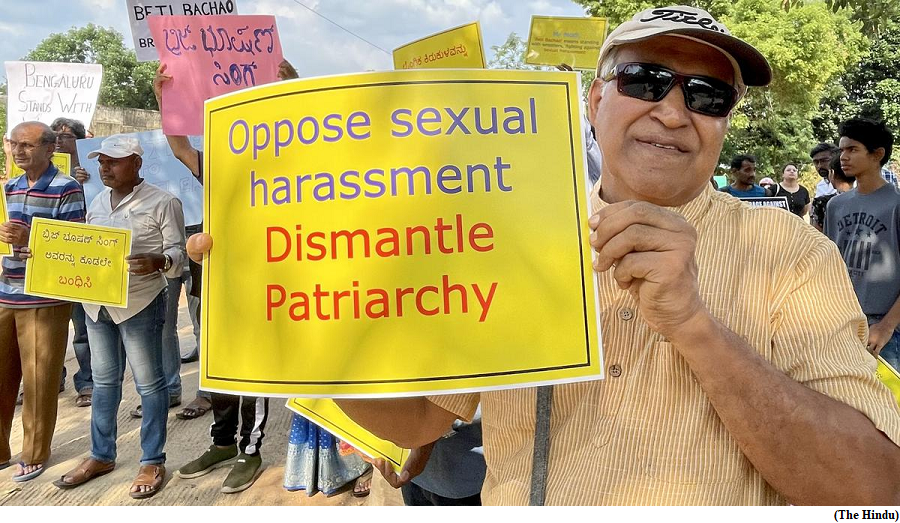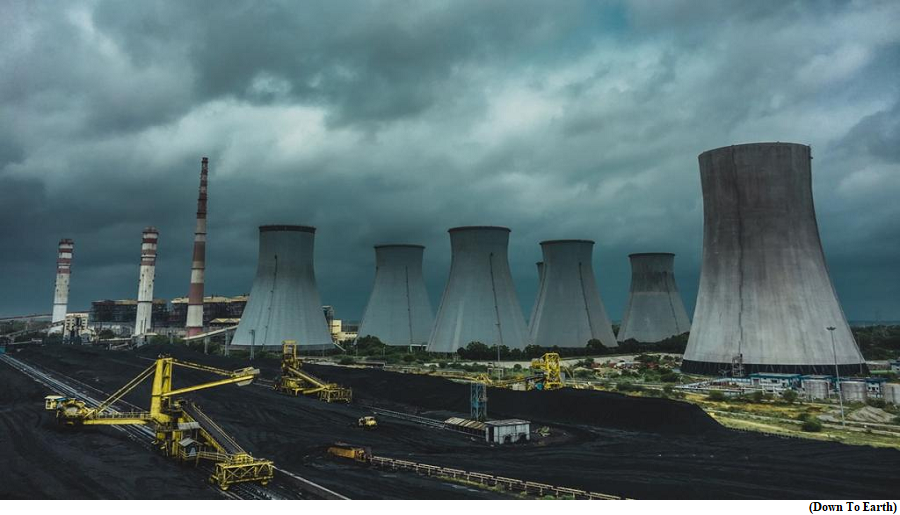Are crimes against women on the rise? (GS Paper 2, Social Justice)

Why in news?
- The crime rate may have declined in 2022 (258.1 per lakh population compared to 268 per lakh population in 2021), but crimes against women rose 4% in 2022 compared to 2021, according to the annual report of the National Crime Records Bureau (NCRB) released recently.
Nature of crime:
- The majority of crimes against women were of cruelty by husband or his relatives (31.4%), kidnapping and abduction of women (19.2%), assault on women with intent to outrage her modesty (18.7%) and rape (7.1%).
- Further, 13,479 cases were registered under the Dowry Prohibition Act.
What does an increase in the registration of crimes against women indicate?
- The NCRB’s report reveals that over 4.45 lakh cases of crimes against women were registered in 2022, equivalent to nearly 51 FIRs (first information report) every hour.
- The rate of crimes against women per lakh population stood at 66.4 while the filing of charge sheets in such cases was pegged at 75.8. The high crime rate is an indicator of the persistent “lower status and inequality” faced by women and girls.
- With 14,247 cases in 2022, Delhi recorded the highest rate of crimes against women in the country at 144.4 per lakh, way above the country’s average rate of 66.4.
- Experts believe the higher numbers show that more cases are being registered in Delhi. In contrast, in many other parts of India, the registration of crime is low and the fear of the police high.
- Women in many States, particularly in the rural areas, would not even visit a police station unaccompanied by a male relative, let alone register an FIR for sexual harassment or domestic violence.
What are the key laws for women’s safety?
Some of the key laws for women’s safety in India are:
- The Immoral Traffic (Prevention) Act, 1956,
- The Dowry Prohibition Act, 1961,
- The Commission of Sati (Prevention) Act, 1987,
- Protection of Women from Domestic Violence Act, 2005,
- The Sexual Harassment of Women at Workplace (Prevention, Prohibition and Redressal) Act, 2013 and
- The Indecent Representation of Women (Prohibition) Act, 1986.
Concerns:
- The implementation faces dual problems of shoddy investigation by police and time taken by courts to deliver justice.
- There is a severe lack of police officers with requisite training for investigations. Most of the investigating officers are juniors with a poor pay scale. This hampers the actual investigation and preparation of chargesheets, she points out.
- When it reaches the courts, at trial courts which are the first step, the cases take four to five years. If there is an appeal, it takes another 10-15 years. Despite fast-track courts for looking into grievous crimes, the fact is they remain as slow as ever. There is no seriousness in dealing with the crime.
Representation of women in the police force:
- While women police officers are involved in all crimes against women, their proportion in the force is dismal and the rate of their recruitment is very slow in all States without exception. This also causes disproportionate levels of workload on women police personnel leading to slower rates of charge-sheeting and convictions.
- The representation of women in the police force (as of January 1, 2022) remained at 11.7% of the total state police force. This puts undue stress on the limited workforce leading to a high pendency.
Less than 8 percent of India coal power plants can control SO2 emissions, a new analysis finds
(GS Paper 3, Environment)
Why in news?
- Less than eight per cent of India’s coal-based power plants have installed the technology recommended by the Union Ministry of Environment, Forest and Climate Change (MoEF&CC) to keep sulphur dioxide (SO2) emissions in check, an analysis by the Centre for Research on Energy and Clean Air (CREA) has found.

Details:
- Flue Gas Desulfurisation (FGD) units are used to remove sulphur compounds from the exhaust emissions of power plants. India is the largest emitter of SO2 in the world.
- In fact, across India, only a combined capacity of 16.5 Gigawatts (GW) of coal plants have installed FGDs and Circulating Fluidised Bed Combustion (CFBC) boilers equivalent to 5.9 GW.
- The CREA analysis found that 92 per cent of the country’s coal power plants function without FGDs. Since December 2022, only 3.2 GW capacity has installed SO2 control technologies.
Background:
- Eight years ago, the MoEF&CC introduced emission standards in 2015 for regulating SO2, NOx (nitrogen oxides), and Hg (mercury) emissions. The deadline has been extended four times for units in Delhi and the National Capital Region (NCR) and three times for most other units across the country.
Categories of coal-power plants:
- In 2021, the MoEF&CC divided the categories of coal-power plants based on geography to enforce deadlines.
- Category A is demarcated to coal-based power plants within a 10-kilometre radius of the NCR and of cities with a million-plus population.
- Category B is within a 10 km radius of critically polluted areas or non-attainment cities, and Category C is the remaining plants throughout the country.
- The majority of the country’s power plants belong to Category C, with the longest deadlines. The deadlines for plants within the city are shorter due to high pollution levels that could harm people.
- As of October 2023, for power plant units in the 300 km radius of Delhi-NCR, FGD installations have been completed for 2.6 GW installed capacity of the cumulative capacity of 13.4 GW. Bids have been issued for 3.4 GW capacity.
What of NTPC?
- Of the National Thermal Power Corporation (NTPC)’s total 56.3 GW coal capacity monitored by the Central Electricity Authority (CEA) for FGD installation, only 3.6 GW has been installed with FGDs as of October 2023.
- The NTPC, CEA and Central Pollution Control Board have stipulated a timeline of 18-36 months for installation and synchronisation of FGDs from the bid-award date.
- For the whole country, by December 2020, 66.5 GW capacity had already been awarded the bids, but most of this capacity had been not commissioned for FGD installation.
- Even after installing and operationalising the FGD instrument, Delhi’s Dadri thermal power plant SO2 emissions are on the higher side. It means the FGD is not technically compatible with the plant’s capacity or is not running continuously alongside the plant, Aggarwal said.
- Despite having a mandatory feasibility test before installation, there is the possibility of challenges with efficiency.
Installed capacity:
- India’s energy generation installed capacity stands at 425 GW. The thermal sector holds a predominant position within the overall installed capacity, encompassing coal (48.6 per cent), gas (5.9 per cent), lignite (1.6 per cent), and a minimal share (<0.2 per cent) from diesel, according to the 2023 CEA report.
ADB launches climate action catalyst fund to drive decarbonisation in Asia Pacific
(GS Paper 3, Environment)
Why in news?
- The Asian Development Bank (ADB) has unveiled plans to commence operations of its Climate Action Catalyst Fund (CACF) on January 1, 2024.

Details:
- Positioned as a trailblazing carbon fund under the Paris Agreement, the CACF aims to mobilize innovative carbon finance through the acquisition of carbon credits, intending to spur investments in transformative mitigation actions across ADB’s developing member countries (DMCs).
- In a significant departure from conventional carbon market practices, the CACF will provide upfront finance for high-impact climate mitigation actions, ensuring future delivery of carbon credits through long-term transactions.
- This is a notable shift from the customary approach of payments upon delivery, which often entails extended timelines, delaying benefits to project owners.
Cooperative approaches:
- Under Article 6 of the Paris Agreement, the CACF enables cooperative approaches among nations, facilitating direct collaboration between countries.
- This mechanism allows the transfer of carbon emissions reductions achieved through climate mitigation measures in one country to count towards the nationally determined contributions (NDCs) of another.
- The Swedish Energy Agency has committed to contributing 300 million Swedish krona (approximately USD 27 million) to the fund, aiming to mobilize over USD 100 million in commitments from national and subnational government entities, as well as the private sector within ADB member countries.
Assisting DMCs:
- The CACF prioritizes high-quality climate mitigation actions and environmental integrity, seeking to disseminate advanced low-carbon technologies and deliver sustainable development impacts for local communities in Asia and the Pacific.
- The fund’s overarching goal is to assist ADB DMCs in achieving and progressively elevating the targets outlined in their NDCs.
- By engaging financing partners, the CACF provides a mechanism to meet compliance requirements and fulfil various purposes by purchasing carbon credits from a diverse portfolio of projects, programs, and scaled-up activities supported by ADB.
Significance:
- The launch of the CACF solidifies ADB’s role as an early mover in operationalizing international carbon markets under Article 6.
- The initial tranche of Article 6 transactions under the fund is poised to set examples for new stakeholders interested in participating in Article 6.
- Additionally, the fund will offer a crucial price signal while contributing to the evolution of new international carbon markets under the Paris Agreement.
Way Forward:
- As the climate bank for Asia and the Pacific, ADB’s carbon markets initiatives align with its broader efforts to bolster climate action and advocate for green growth in the region.




